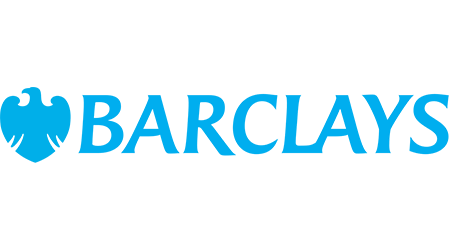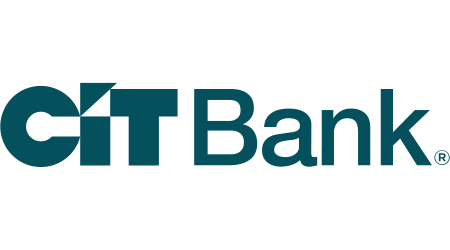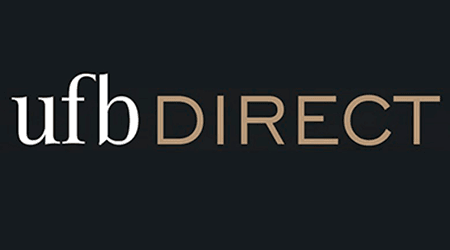Are There Any Banks That Use Continuous Compounding of Interest on Savings
Best for no minimum deposit

Barclays Online Savings
- No monthly fees
- Competitive 2.40% APY with no minimum balance requirements.
- Unlimited monthly transactions
Best for online savings

CIT Savings Connect
- Earn a competitive rate at 3% APY
- Enjoy no monthly fees
- Easy funding through transfers and mobile check deposits
Best for high APY

UFB Elite Savings
- Earn a competitive rate of 3.11% APY no matter your balance
- Open an account with as little as $0
- Get an ATM card for easy access to your money
While there are other types of accounts that compound interest, savings accounts are the most well known and often the most flexible. If you're looking for a compound interest account, these are a good place to start. Select up to four accounts and click "Compare" to see how they stack up side-by-side.
What is a compound interest account?
Most savings accounts have interest that compounds on a daily or monthly basis, but you might find some that compound on a quarterly or annual basis. The interest rate set by the bank and how often it compounds can make all the difference. If your account compounds on a daily basis, your savings could grow faster than it would if it compounded on a quarterly or yearly basis.
Types of accounts that earn compound interest
Here are seven of the most popular accounts that compound interest:
- Savings accounts. Depending on the bank, your savings account could compound on a daily, monthly, quarterly or yearly basis. The best high-yield savings accounts offer competitive yields, though some may carry requirements like minimum deposits.
- Certificates of deposit. Certificates of deposit (CDs) compound on a daily or monthly basis. The best CDs offer higher interest rates for a low minimum opening deposit.
- Money market accounts. A money market account is very similar to a savings account when it comes to interest and saving money. The main difference is a money market account typically offers a debit card and the ability to write checks. Rates between savings accounts and money market accounts are roughly similar.
- Interest-bearing checking accounts. As the name suggests, an interest-bearing checking account is a checking account that offers interest on your deposits. They tend to have lower interest rates than savings accounts or CDs, and may also carry more fees.
- IRA accounts. An IRA account is a account designed to help you save for retirement. There are multiple great IRA options, including Roth and SIMPLE IRAs, each with their own set of rules and advantages.
- Dividend stocks. Dividend stocks are a type of stock investment that pays out dividends based on your owned shares. These can lead to stable, reliable returns on an investment, though the quality of your investment can range from company to company.
- Bonds and bond funds. Bonds are an asset investment option similar to stocks or real estate, though are technically loans to the consumer from an entity. These entities eventually pay back the bond amount purchased by the consumer, plus interest. These typically fall into 3 categories: corporate, government and municipal.
The more frequently your interest compounds, the quicker your money will grow. There are generally four types of compounding interest:
- Daily. This is the quickest way to grow your money because interest is added to your account balance every day. Most savings accounts compound interest daily and post earnings to your account monthly.
- Monthly. Interest is calculated on your account once per month. Your balance doesn't grow as fast as it would with daily compound interest, but it's still quicker than other frequencies.
- Quarterly. With quarterly compounding, interest is calculated once every three months. Although uncommon, this compounding period is still used by some credit unions.
- Annually. As the name suggests, annual compound interest is calculated once a year. This compounding period is most commonly used with investment accounts.
Want to see how much you could earn with daily compound interest? Use a compound interest calculator to estimate your savings growth.
When comparing savings accounts there are a few important considerations to determine the best one for your needs.
- The rate. The higher the interest rate on an account, the more you'll earn over time.
- How often it compounds. An account that compounds daily will earn more money over time and more quickly than an account that compounds monthly.
- Requirements needed. Some compound interest accounts have certain requirements you need to meet to open and maintain the account, or to earn a specific rate. These requirements can include things such as tiered minimum balance or a required checking account.
To get the most out of compound interest, deposit as much as you can into your account and limit any withdrawals from it, whether for bills or fun money. The more that's in your account at the end of the month, the more interest you'll earn. Even if you can't deposit extra money into your account, your balance continues to grow as your interest compounds each month.
Depending on the interest rate and your balance, the difference between daily, monthly and yearly compounding might only amount to a matter of pennies. But if you have a high balance and a high interest rate, the difference in compounding frequency could add up to a decent chunk of change.
Compound interest example
Here's a breakdown of how much interest $10,000 would earn in a 1% APY savings account over the course of 10 years based on whether interest compounds yearly, monthly or daily. For simplicity's sake, this example assumes no additional contributions are made to the account.
| Yearly | Monthly | Daily | |
|---|---|---|---|
| 1 year | $10,100.00 | $10,100.46 | $10,100.50 |
| 2 years | $10,201.00 | $10,201.93 | $10,202.01 |
| 3 years | $10,303.01 | $10,304.42 | $10,304.54 |
| 4 years | $10,406.04 | $10,407.93 | $10,408.10 |
| 5 years | $10,510.10 | $10,512.49 | $10,512.70 |
| 6 years | $10,615.20 | $10,618.10 | $10,618.36 |
| 7 years | $10,721.35 | $10,724.77 | $10,725.07 |
| 8 years | $10,828.57 | $10,832.51 | $10,832.86 |
| 9 years | $10,936.85 | $10,941.33 | $10,941.73 |
| 10 years | $11,046.22 | $11,051.25 | $11,051.69 |
To get the most out of an account with compound interest, save as early as possible and avoid unnecessary withdrawals.
- Stay on top of your monthly minimum. Some accounts require a minimum monthly balance before requiring a fee. Keep more money in your own pocket by meeting that minimum.
- Deposit what you can. Because compound interest helps your money make money, you can increase your earnings with routine deposits to your savings balance.
- Avoid fees. Many banks waive fees for linking your savings and checking, directly depositing your paycheck or signing up for autopay. Ask about ways for you to get a leg up on your savings.
Compound interest is an incredible benefit. But it's only one element to consider when shopping for a savings account.
Pros
- Accessibility. Many savings accounts with compound interest allow you to withdraw or deposit whenever you need to. Meaning you can save and still easily access your money in an emergency.
- Lower balance requirements. You can often stay in your bank's good graces with a low balance.
- Introductory rates. To compete for your business, many banks and credit unions offer higher introductory interest rates on savings accounts for a set time.
- Increased earnings. With compound interest, your earnings increase exponentially — as long as you don't withdraw funds.
Cons
- Lower rates. Annual interest rates may not be as strong as money market accounts and CDs, which typically offer higher rates because interest isn't compounded monthly.
- Availability of funds. For some people, open access to savings is a drawback. You can easily dip into it for daily needs, ending up losing a portion of your interest earnings.
Back to top
Yes, provided the account is insured by the FDIC. Most reputable banks and accounts are FDIC-insured, which protects up to $250,000 of your investment. Accounts that don't offer this insurance are much riskier.
In the context of lending, interest is the cost of borrowing money. When you take out a loan, you typically pay interest as a percentage of the principal amount at an agreed rate.
When it comes to savings accounts or investments, interest is the money you earn for allowing the bank, credit union or other financial institution access to your money. When you deposit your money into an interest-bearing account, you're effectively lending money to the bank. Pooling together its members money is how banks and other lenders provide loans to borrowers, among other banking activities.
Many factors play into the amount of interest you ultimately receive, including:
- The interest rate
- How it's calculated — for example, daily or monthly
- How often it's compounded and paid
The interest rate is often expressed as an annual percentage. The higher the interest rate you're offered, the stronger your return.
Back to top
Your provider should prominently advertise the monthly variable interest rate under the product description for the particular account you're looking at. It's how they entice you to do business with them, and not a competitor.
To determine if the interest is compounded daily, look at how interest is calculated and when it's paid. Interest that's paid monthly is compounded monthly, but you'll need to read the fine print or call a rep to find out how your account works.
If you're not sure where to start, read our comprehensive guide to interest rates to see popular high-interest savings accounts. Note that interest rate are often variable, meaning they can change according to the federal interest rate.
Source: https://www.finder.com/savings-account-compound-interest
0 Response to "Are There Any Banks That Use Continuous Compounding of Interest on Savings"
Post a Comment